Classically, African safaris are enjoyed from the lofty seats of an all-terrain Land Cruiser. A safari on four wheels gives you a wide berth to travel far distances on a single game drive, with opportunities to encounter a diversity of wildlife in relative comfort and security. So, you might ask, why walk when you can drive?
After a few days of twice-daily, extended game drives bumping along corrugated tracks, you may be overcome with an impulse to stretch your legs. However, in many of Africa’s famous national parks (Tanzania’s Serengeti, South Africa’s Kruger, and Kenya’s Maasai Mara), you’re prohibited from leaving the vehicle—with the exception of limited, designated areas. Sure, you might be placated by a guided bush walk—typically lasting an hour and ambling close to your lodge or camp—but if you want unfettered wilderness immersion, a fly-camping walking safari is what your wild heart craves.
Far from park roads and the hum of engines, you’ll be amazed by the small wonders that come into focus. With the wind in your hair, sun on your skin, and soil underfoot, these are Extraordinary Journeys’ favorite luxury walking safaris in Africa.
Walking safari in the Maasai Mara ecosystem, Kenya
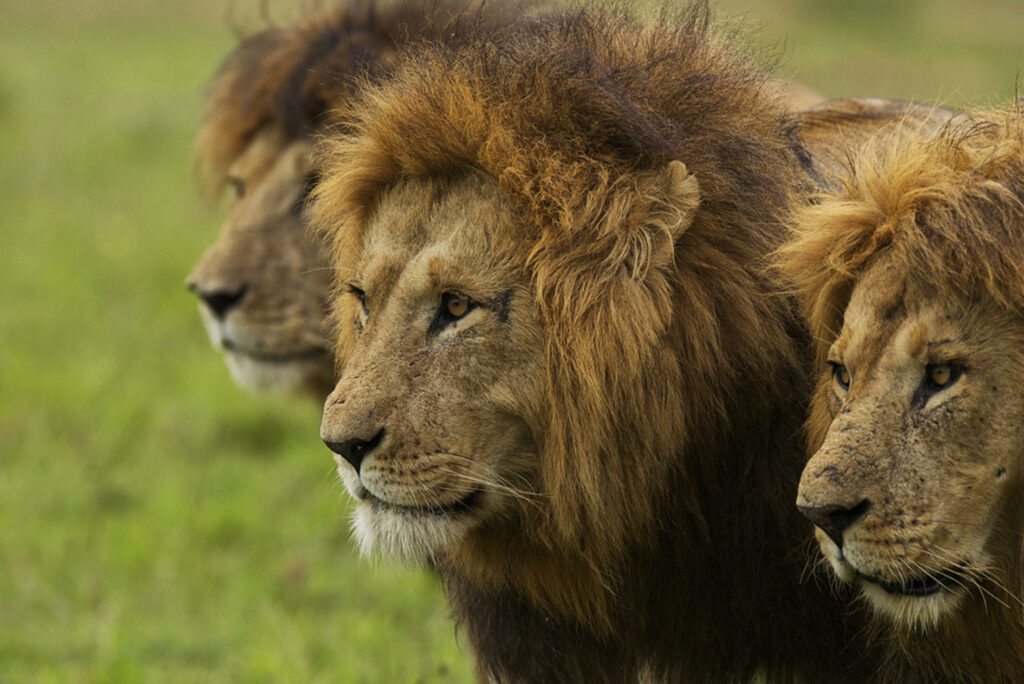
Though it is not designated a national park, visitors to Kenya’s Maasai Mara National Reserve are subject to strict rules and operating hours. And while there’s nothing wrong with staying within the Mara, per se, we prefer to send travelers to private conservancies adjacent to the Reserve. Translation: same wildlife and ecosystem but fewer rules, more flexibility, and the ability to enjoy night game drives and walking safaris.
Our favorite luxury walking safari threads Naboisho Conservancy and Olare Motorogi Conservancy across five spectacular nights. You’ll spend two nights at an intimate, six-tent camp nestled in a secluded valley hugged by acacia woodland. In this secluded pocket, resident wildlife—giraffe, in particular, abound. Enjoy a full day of camp life, maybe even catching a night game drive, before setting out the next day for a walking safari.
Accompanied by accomplished guides, you’ll walk three to four hours. On foot, you’ll feel your senses tingle, and while moving at a slower pace, pore over every fascination from tracks to spoor. Arriving at the western hem of Naboisho, you’re greeted by a fully assembled and staffed fly camp in a very special wilderness setting exclusive to you. Hosted by a Maasai guide, you’ll shower, relax into a sundowner, and enjoy a sumptuous meal cooked on an open flame. Slumber on a simple but comfortable camp bed in a dome tent, lulled to sleep by the soundtrack of the bush. After breakfast, you’ll carry on while the morning is cool. During your four to five-hour journey to reach a dreamy, six-tent Olare Motorogi Conservancy camp, you’ll skirt an escarpment and pass through the Seketa Valley.
Spend a pair of nights here before moving on to your next destination. This walking safari route can be done in reverse and caters to a maximum of six guests per party.
Walking safari in Serengeti National Park, Tanzania
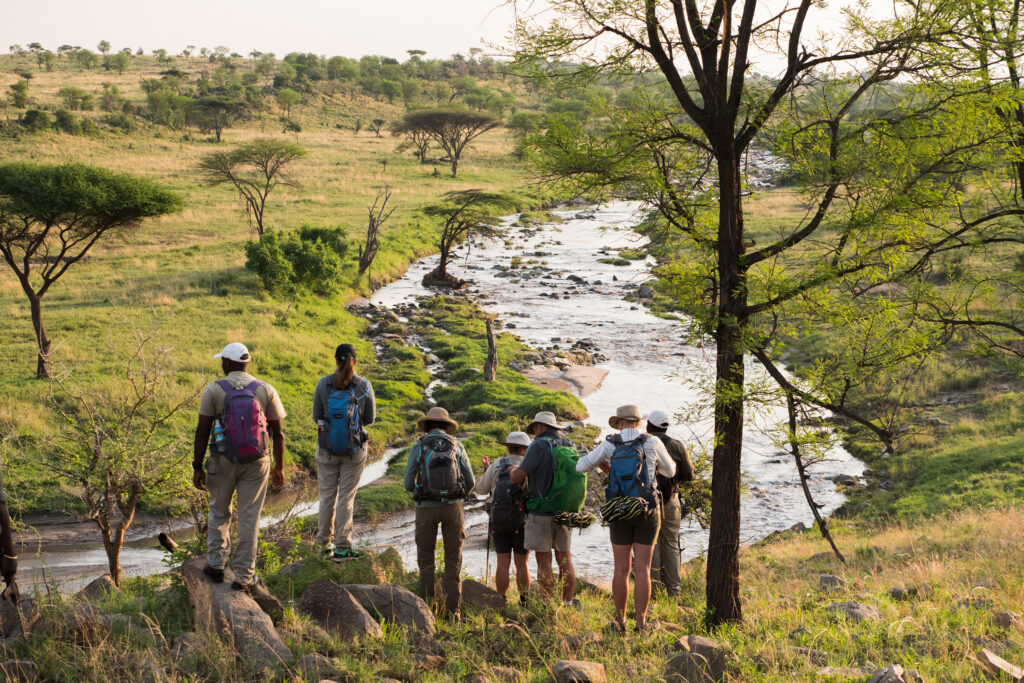
Normally, game viewing in Tanzania’s Serengeti National Park is restricted to your 4×4, rumbling along well-worn, authorized tracks. On a private walking safari with Wayo Africa, you’ll hike from camp to camp through designated “wilderness” and “rhino protection zones”—vast, untouched tracts of the Serengeti few others are permitted to visit. There are no trails or commercial roads, nor permanent accommodations along this route.
Each day, your lightweight eco-camp is packed and transported to the next scenic location. You’ll walk eight to 10 gentle miles with an experienced, knowledgeable guide and an armed ranger, bearing only the weight of your day pack. Any point of interest, from paw prints to petals, is an excuse to stop. You’ll rendez vous later at a fully assembled camp—usually by noon—greeted with lunch and warmed shower water. Although your fly camp won’t serve crème brûlée in crystal dishes, delicious meals are served in three courses and you’ll rest atop four-inch mattresses, hugged by pressed cotton linens.
Creature comforts aside, a Wayo Walking Safari’s remote environs place you among the Serengeti’s generous populations of resident game not limited to lion, elephant, leopard, buffalo, giraffe, and zebra. Private and tailor-made, these walking safaris can be long (~eight nights) or short, easy, or challenging.
Is your heart fixed on Tanzania?
Here are nine of our favorite walking safaris in Tanzania.
Walking safari in South Luangwa, Zambia

Walking safaris fit nicely into the slow travel movement but their emergent popularity is a case of what’s-old-is-new-again.
Mid-century, when Zambia was still called Northern Rhodesia, Norman Carr pioneered the idea of aiming cameras instead of hunting rifles at wildlife. Carr persuaded Senior Chief Nsefu of the Kunda people in the Luangwa Valley to set aside a portion of tribal land as a game reserve, with revenue flowing back to the community. It was a preeminent model of community-based tourism that’s widely practiced today. To follow in the footsteps of early conservationists, we recommend a walking safari in the truly wild South Luangwa. Despite Carr passing in 1997, his influence is still hot to the touch.
On a five- to 10-night walking safari you can stay in four seasonal camps in locations that were originally sited by Carr decades ago. Each sublime camp is situated in a unique setting, from an intimate river lagoon frequented by wildlife to a lofty perch along a sweeping curve of the river. A fifth evening is reserved for a ‘Sleepout under the Stars,’ where a gauzy mozzie net is the only thing separating your bedroll from the Milky Way. A collective 26 miles of walking connects the camps (though the itinerary is tailor-made, so walk at your own ambition), winding through terrain so abundant with cats, plains game, and elephants that it has earned the moniker ‘Valley of the Leopard.’
The entire experience is supported by world-class guides, some of whom trained with Carr himself. Luggage is transported for you; the recommended minimum age is 12; camps operate seasonally from mid-May through early November.
Walking safaris in Zimbabwe
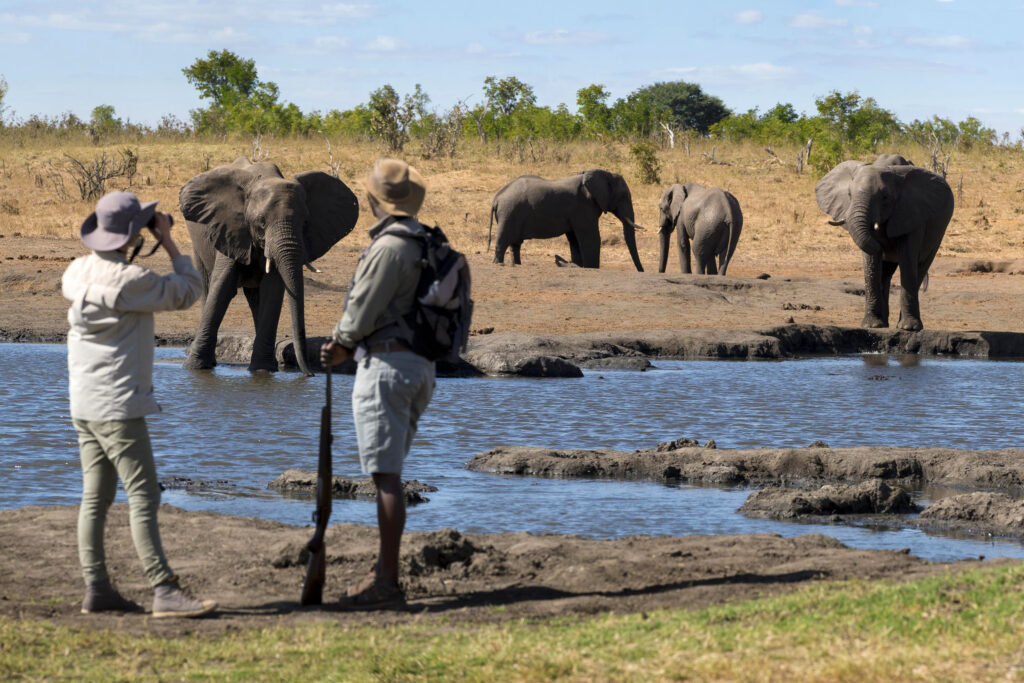
If you’re wanting a walking safari experience without trading camp amenities for bedrolls, Zimbabwe is an EJ favorite for day walks. Uniquely, national parks in Zimbabwe are liberal on restrictions relating to exiting the 4×4 to plant your feet on terra firma—so long as you are accompanied by a guide. And it’s not by happenstance.
Zimbabwe enjoys the reputation of having some of the best professionally accredited guides in Africa. The six-step journey to achieve qualification is stringent, exhaustive, and lengthy, encompassing book theory, a multi-year real-world apprenticeship, shooting acumen, and first aid. This high caliber of guiding allows for guided bush walks and walking safaris within Zimbabwe’s national parks.
Extraordinary Journeys safari experts have enjoyed exceptional, day-long walks in both Hwange National Park and Mana Pools National Park.
Hwange, the country’s largest and oldest park, is famous for its population of elephants and abundant lion sightings. During the dry season, dizzying masses of wildlife congregate around water holes—making for the most memorable safari moments.
Remote and wild, Mana Pools National Park sits on the south bank of the mighty Zambezi River, which separates it from Zambia’s Lower Zambezi National Park. Thin undergrowth along its river terraces offers safari-goers fantastic opportunities to spot elephant, buffalo, impala, zebra, and perhaps even lion and wild dog.
Walking safari in Bwindi Impenetrable Forest, Uganda
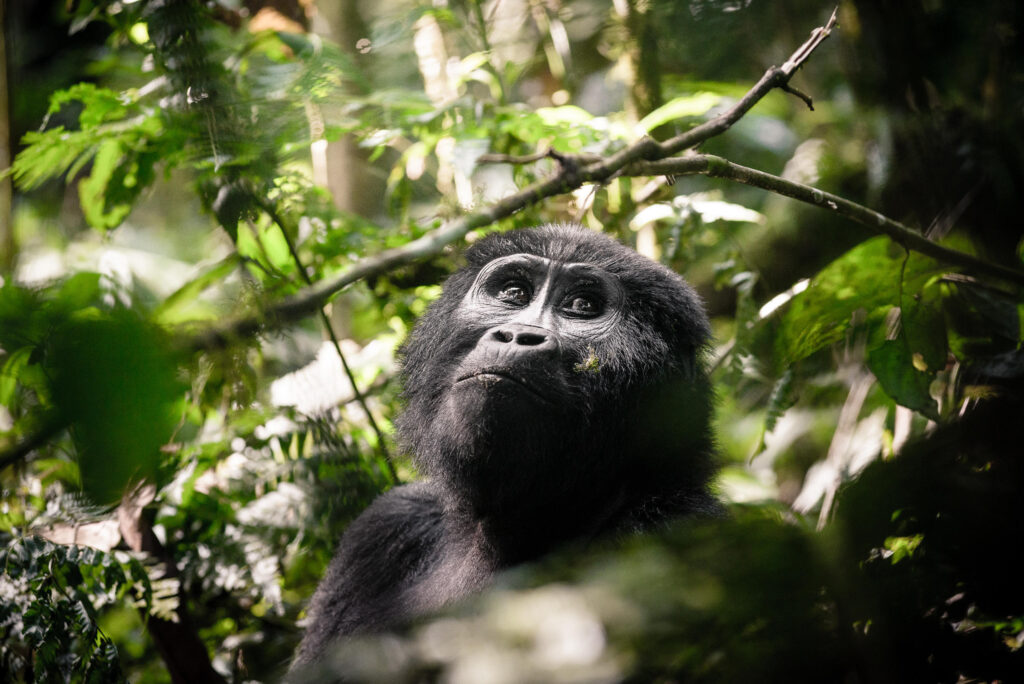
Up to this point, our favorite luxury walking safaris have been staged on plains, in woodlands, and the savannah. In Uganda, tropical and biodiverse Bwindi Impenetrable Forest calls to intrepid travelers who want to lock eyes with mountain gorillas or chimpanzees. But there’s another tantalizing, albeit lesser-known, adventure to be had here—a walking safari that cuts deep through the primeval Forest’s western flank.
Described to us as Lord of the Rings-meets-Indiana Jones, this walk threads you through a labyrinth of towering trees and ferns, across footbridges and streams, and passing by effervescent waterfalls. The trailheads connect Buhoma in the north and Nkuringo in the south, spanning some nine miles. The guided walk should take between five and seven hours. Incredibly, that’s shorter than the six to eight hours it takes to drive the unpaved 105 miles between the two places.
The trail can be walked in either direction. Traveling south to north is the uphill option (~1,600-foot elevation gain; keeping in mind most of Bwindi is a (literal) breath-taking 6,500 feet above sea level), but also the more scenic one as you’ll enjoy volcano views. Local porters can lighten your load, transporting your bags.
Adventurous & luxurious Africa safari itineraries
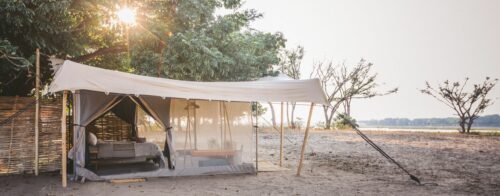
- Itinerary
Back to Nature Wilderness Adventure
Old-School Zambian adventure in owner-run camps
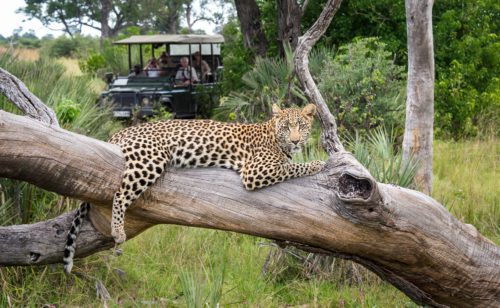
- Itinerary
Exploring Zambia: Walking and Waterways
Explore two of Zambia’s Iconic Parks and Diverse Activities
Keep reading about luxury walking safaris in Africa

Where to Take a Walking Safari in Tanzania
At Extraordinary Journeys, we like to push travelers just beyond their comfort zone—a…
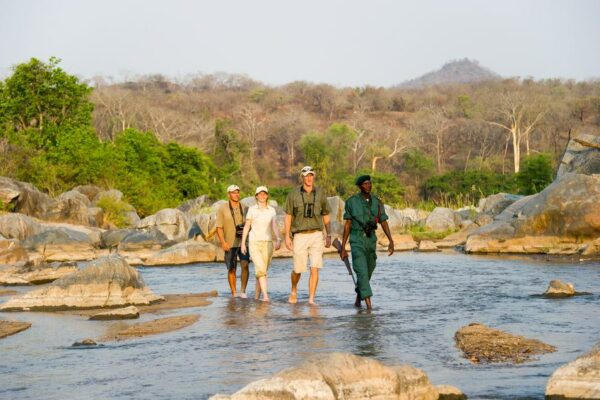
Why Are Walking Safaris So Satisfying?
Why Are Walking Safaris So Satisfying?, How often do you stop to think that the long…
Book your Walking Safari Now
Ready to start planning your own incredible adventure? We make the process stress-free and enjoyable.
